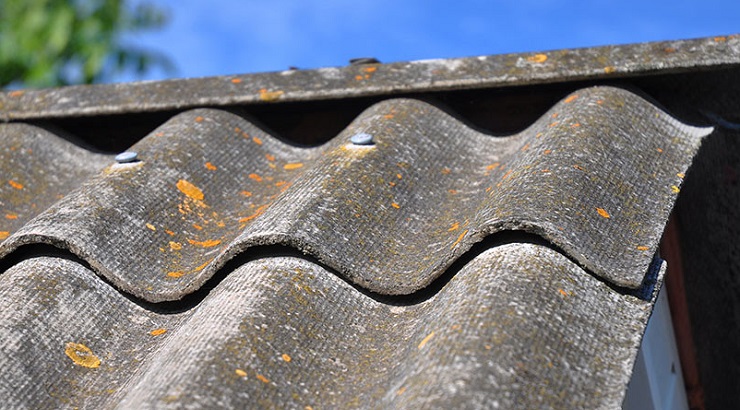Industry News
State Orders Removal of Asbestos Roofs in 90 Days
Asbestos causes mesothelioma, a cancer that is difficult to treat.

The government has issued a countrywide directive for the removal of asbestos roofing sheets from all buildings—both public and private—within the next three months.
The directive, communicated to the National Environment Management Authority (NEMA) on August 28 by Cabinet Secretary for Environment, Climate Change, and Forestry Aden Duale, gives landlords a 90-day ultimatum to comply due to urgent public health concerns.
Mr Duale directed Nema to map out facilities with asbestos roofing countrywide to ensure their removal to enhance public safety and protect citizens from the hazardous health risks associated with asbestos exposure.
“[Mr Duale] stated that he has already written to public institutions with such roofing to remove them and dispose of them in line with NEMA guidelines,” the authority said in a statement.
In the 1970s, asbestos was a popular roofing material known for its versatility in soundproofing. Ceiling boards, floor tiles, shingles, and fire doors, among other things, were made with asbestos.
However, in the 1980s, scientists discovered that inhaling thin asbestos fibres causes serious respiratory diseases such as lung cancer, asbestosis and an aggressive cancer called mesothelioma.
Today, many countries, including developed nations such as Germany and the United Kingdom, have banned the use of asbestos.
RELATED: 9 Most Dangerous Building Materials
Although Kenya outlawed the importation, manufacture, and use of asbestos in 2006, older structures—such as public schools and hospitals—continue to harbour asbestos roofs.
Nobody seems to care except for a few residents of Blue Valley Estate within Nyeri town, who in May 2017 petitioned Parliament to make a pronouncement on the matter.
Through the then Nyeri Town MP Esther Murugi, the petitioners protested that they had for decades lived in houses with asbestos roofs, a situation that put them at risk of mesothelioma.
The petitioners asked legislators to recommend the cessation of asbestos as a roofing material, removal of the asbestos roofs and replacement with galvanised iron sheets in the estate.
In response to the petition, Parliament ordered the Ministry of Health to assess residents exposed to asbestos to determine the extent to which their health has been affected.
RELATED: List of NEMA-Approved Asbestos Roof Landfills
For such petitioners, Duale’s directive is welcome. However, there are growing concerns about the disposal of the removed asbestos to prevent further health risks.
“Kindly list the safe disposal sites in each county,” Joseph Kimani, a social commentator, urged Nema.
The high cost associated with the removal, transportation, and disposal of asbestos waste also presents a considerable challenge.
Experts estimate that the costs could strain the budgets of many institutions, particularly those in the public sector and small private establishments.
“My primary school in Thika tried to have [asbestos roof] removed three years ago and the cost came to Sh18 million! Reason: no county allows the disposal of asbestos in their dump sites; it has to be exported,” Mungai Kihanya, a management trainer said on X.














